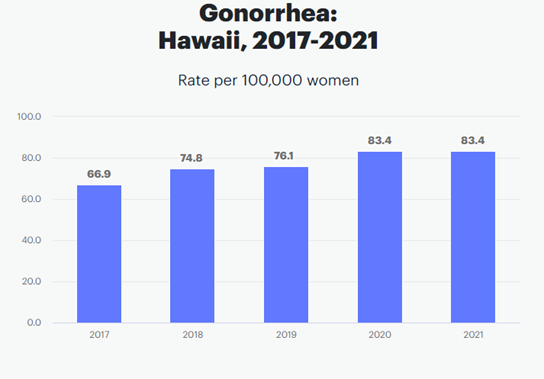Historical Perspectives
Session: Historical Perspectives
819 - Historical Perspectives: 'Return of the Clap" Gonorrhea in Hawaii
Sunday, April 27, 2025
8:30am - 10:45am HST
Publication Number: 819.5514
Adedapo Kiladejo, St. Christopher's Hospital for Children, Philadelphia, PA, United States; Folasade Kehinde, Drexel University College of Medicine/St. Christopher's Hospital for Children, Lansdale, PA, United States
- AK
Adedapo Kiladejo, MD, MPH, FAAP. (he/him/his)
NICU Fellow
St. Christopher's Hospital for Children
Philadelphia, Pennsylvania, United States
Presenting Author(s)
Background: Gonorrhea in Hawaii has been a significant health issue historically reflecting broader trends in infectious disease transmission and maternal-child health concerns in the region. Gonorrhea is the second most prevalent sexually transmitted disease (STI) in Hawaii with the highest cases reported in Honolulu County. Since 2000, the reported cases of gonorrhea in Hawaii have risen by 50%. Gonorrhea in women is often asymptomatic in >50% of affected women. Gonococcal infections complicating pregnancy can lead to adverse pregnancy outcomes such as low birth weight newborns and transmission to newborns resulting in significant morbidity. The history of gonorrhea in Hawaii dates to 1778 with the fatal introduction of epidemics of foreign contagious infections including gonorrhea by Captain Cook and his crew. This impacted maternal and infant health significantly due to lack of effective perinatal care and antibiotics. Increased awareness, enhanced diagnostic techniques, and the advent of antibiotics in the 1940s drastically improved health outcomes, reducing maternal-to-infant transmission rates and improving infant survival. However, tourism and changing social norms has led to periodic increases in gonorrhea rates. In April 2016, the Centers for Disease Control and Prevention (CDC) reported a cluster Neisseria gonorrhea with reduced susceptibility to standard antibiotic treatment option in seven patients in Honolulu. To date, Hawaii continues to have one of the highest rates of antibiotic-resistant gonorrhea in the United States. This impacts both maternal and newborn health. This abstract examines the epidemiology, public health responses, innovations in screening and management of, and outcomes associated with gonorrhea in Hawaii from the mid-18th century to present.
Objective: To explore the historical perspectives of gonorrhea in Hawaii, examining its prevalence, transmission patterns, socio-cultural factors, and public health interventions over time.
Design/Methods: A comprehensive review of historical records, scientific journals, medical literature, newspaper articles, and public health data.
Results: The history of perinatal gonorrhea in Hawaii offers a lens into the complex public health challenges associated with STIs and their impact on maternal and child health.
Conclusion(s): Hawaii experienced high rates of gonorrhea relative to other U.S. states due to unique demographic, economic, and geographic factors. The historical journey of managing gonorrhea in Hawaii highlights the significance of sustained public health effort and innovation in healthcare access and STI prevention.
Portrait of Captain James Cook / Nathaniel Dance-Holland, Public domain, via Wikimedia Common

Gonorrhea: Hawaii, 2017 - 2021
 www.marchofdimes.org/peristats.
www.marchofdimes.org/peristats.
